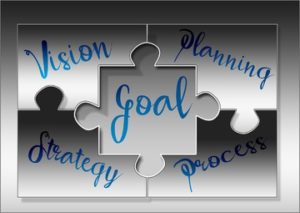Music-Loving Donor Leaves $10 Million Planned Gift to Radio Station
How Much Money Is Your Nonprofit Missing by Not Having a Planned Giving Strategy? 5 Tips to Help Develop Your Plan
 A story reported by the Seattle Times in April 2018 has much to teach nonprofits about planned giving.
A story reported by the Seattle Times in April 2018 has much to teach nonprofits about planned giving.
The message is loud and clear, just like their signal will be because of a $10 million gift:
Don’t put off developing your planned giving strategy any longer.
Here’s the story: A woman who had occasionally supported a local independent radio station told them she had put them in her estate plan. They were grateful but didn’t know what to expect, or when. The donor wished to remain anonymous, so we don’t know her exact age or her cause of death. But she was “young”, according to the station’s director of development.
What we do know is this:
She left them $10 million when she died.
The radio station (KEXP) did something very smart after receiving this gift. They formed something called The Reverb Society. It’s a special club only available to people who put the station in their estate plans. Now, they can market this opportunity to all their supporters.
Very smart move.
But this whole story is instructive for nonprofits for several reasons. Here are five lessons you would be wise to act on using the planned giving tips that follow each one.
5 Planned Giving Tips and Lessons
-
Your donors will put you in their estate plans – if you ask
It’s not like they’re waiting for you to ask. It’s just that they haven’t thought about it. Most people try to avoid the topic of death. Making a will goes against that. We all know we should do it. But actually doing it takes some effort and commitment.
But when your supporters are presented with the idea of putting your nonprofit in their estate plan, many of them will be thrilled at the idea, just like the radio station donor.
There is a lot of money available through planned giving, and all you have to do is ask. Most nonprofits don’t.
As the Bible says, you have not because you ask not. It’s true with people too.
Planned Giving Tip: Ask
-
Planned giving can be part of your fundraising strategy
 The creation of The Reverb Club is just one way KEXP could have done this. But by having a clearly defined avenue for planned giving, the radio station has taken that crucial first step of planting the idea in the minds of their supporters.
The creation of The Reverb Club is just one way KEXP could have done this. But by having a clearly defined avenue for planned giving, the radio station has taken that crucial first step of planting the idea in the minds of their supporters.
Once you’ve planted the idea, they will remember it. But then, what do you do next?
Make a plan to keep asking. Moceanic offers coaching on developing a Supporter Connection Survey. Part of this survey includes a question for donors about putting your nonprofit in their estate plan.
You can add a follow-up process that includes phone calls, emails, in-person meetings, and mailed letters. It’s worth it. When these gifts come in – which might be decades later – they can be huge. Five, six, seven, or even eight figures (for those counting, $10 million is eight figures).
Spending a small sum now will return huge windfalls later, at completely random and unexpected times.
Planned Giving Tip: Create a formal fundraising strategy for planned giving
-
Planned giving requires long-term thinking
KEXP didn’t expect this gift to come in for a while, because the donor was “young.” Again, we’re not told how she died, or if she knew her time was coming sooner than people thought.
When you’re pursuing planned giving, you’re not thinking of yourself or the recipients of your service today. You’re thinking 20, 30, 40 years down the road. You may be in a new career, retired, or deceased yourself before most of these gifts come in.
Does that matter?
It shouldn’t, if your goal is to help this nonprofit commit to its mission for years to come. Think beyond this month, this campaign, and this year. Think 30 years from now. And get your donors to think that far ahead too.
Planned Giving Tip: Focus on your nonprofit’s long-term vision
-
You don’t know when someone’s going to die
 When most people think of planned giving and estate plans, they think of someone like this lady.
When most people think of planned giving and estate plans, they think of someone like this lady.
Should you ask your older supporters to put your nonprofit in their estate plan? Sure. But only because you didn’t ask them sooner.
Waiting until someone’s in their 60s is too late. Many people make their first estate plans when they start having kids (36% of gen-Xers have a plan, 22% of millennials). You want to get in their estate plan from the start, because updating an estate plan is just as much of a hurdle as creating the first one.
There is no age too young to get your donors thinking about planned giving.
Here’s a better picture of your planned giving target audience:
Planned Giving Tip: Ask donors of all ages
-
People move on – seize your chance while you have it
This is a crucial reality to understand: Many donors only give to certain nonprofits during a season of life when it’s relevant to them.
Maybe it’s a local charity and they give while they live in that town. But once they move, they stop giving.
Maybe they only give because it relates to their kids, like a private school fundraiser or a club, activity, or sports-related nonprofit.
Maybe something happens in their life that discourages them, and they pull away from things.
There are all kinds of reasons people give only temporarily.
If you’re going to ask these people to put your nonprofit in their estate plan, you have to ask NOW, while they’re actively giving. If you wait 20 years, after they’ve moved on and haven’t thought about you much even though they’re still on your mailing list, the emotional bond between you and them has become stale.
Now, the decision to put you in their will becomes more intellectual and academic, and less emotional.
Don’t wait too long. Ask while people are actively supporting you. The window might close.
Planned Giving Tip: Begin planned giving marketing with newer donors
Worried About Planned Giving Reducing Current Donations? Don’t Be
Some have wondered if donors who put charities in their estate plans will then reduce their giving in the present. It’s the belief that since I just allocated $50,000 to this charity in my will, then now I don’t need to give anything more to them today.
These kinds of beliefs arise from the mistaken assumption that people make all their decisions based on careful analysis and rationality.
They don’t.
Economic theory is the same way. There’s a falsehood many believe, that “people will do what is in their own best interests.” All of human history and if we’re honest, much of our own behavior, contradicts this belief, yet many (well “educated”) economists and government people continue to develop policies based on its supposed truth.
 The reality is, people who put your nonprofit in their estate plan are more likely to increase their current giving to you as well.
The reality is, people who put your nonprofit in their estate plan are more likely to increase their current giving to you as well.
This article from Future Fundraising Now verifies this. They report a 75% increase in annual giving after someone puts a charity in their will.
Why does this happen? Quite simply, because giving increases compassion and alignment with a cause. Once you’re in their will, now they care even more about your mission and want to be more involved. You’re now part of their legacy, and they want to see something happen while they’re still alive.
Create Your Planned Giving Marketing Plan Now
You’ve got five lessons learned and five tips to get started on making your planned giving marketing plan. Your board and marketing team need to make this a priority.
Donors will move. Kids will graduate. Excitement will wane.
Reach out and start asking, and have a plan for following up.
If you’d like help developing your planned giving strategy, request a free consultation where we can discuss how to get started.
Can I get FREE Planned Giving Help? Yes!
If you sign up for the Email Growth or Email Maximizer annual email copywriting packages from ProActive Content, we will help you develop your planned giving strategy for absolutely free.
Free. When you consider that just one planned gift can quite easily be five figures ($10,000 or more), then free becomes quite an amazing price.
To learn more about Email Growth and Email Maximizer, contact ProActive Content’s fundraising branch.


